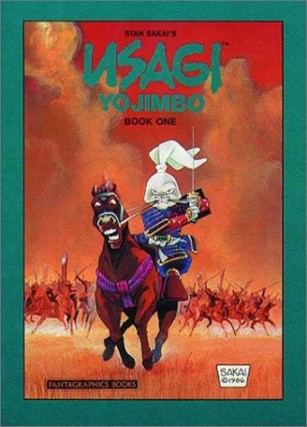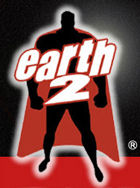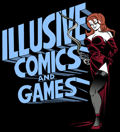| Usagi
Yojimbo
I was a Teenage Mutant Ninja Turtles freak
back in my pre-adolescent days. I had every toy imaginable:
from that electronic plastic disc (“pizza”)
shooting thing, to the Michelangelo surf board, not to mention
all the action figures a grubby handed kid could get for
Christmas. I even had the Ninja Turtles table hockey game.
We all have skeletons in our closets.
The
reason I bring this up, is because it was on Teenage
Mutant Ninja Turtles where I was first introduced to
Stan Sakai’s character of Usagi Yojimbo, an anthropomorphic
samurai rabbit that for one reason or another, was fighting
the Turtles and then became friends. (My memory is slightly
fuzzy on the actual plot specifics of the episode; such
disgrace to the fanboys I am.) It wasn’t until years
later that I discovered that Usagi was actually a character
from the comic book world, and had been since the mid-1980s.
There
was something an explosion of black and white comics in
the 1980s; some claim Eastman and Laird’s Teenage
Mutant Ninja Turtles comic, which would explain Usagi’s
arrival on the cartoon, started it. This gave Stan Sakai,
a letterer on Sergio Aragones’ Groo the Wanderer
at the time, a chance to be noticed by Fantagraphics Books,
who began shoving work at Stan in the form of Usagi Yojimbo
requests, eventually leading to an ongoing series.
Usagi
Yojimbo has survived the lull in popularity of black
and white comics in the early ‘90s, and the varying
tastes of comic readers that is a benchmark of the current
readership, by moving publishers several times, most notably
to Dark Horse, and the publishing rights for Usagi material
is split between Fantagraphics and Dark Horse, Fantagraphics
handling the first seven books, and Dark Horse covering
everything else, which is hefty since the number of collections
of Usagi is near twenty volumes.
The
first volume, which is a loosely strung together series
of events culled from the short stories of our hairy retainer
that appeared in Albedo Anthropomorphic and Critters,
shows Usagi as a samurai without a master, having lost his
lord in battle with the Lord Hikiji. Miyamoto Usagi is now
a ronin, taking work as a yojimbo (“bodyguard”)
whenever he can. The reader follows Usagi through several
short stories, wherein the presence of Lord Hikiji’s
machinations towards the Shogun seem to foreshadow an active
future for Usagi, and the fighting prowess of our katana-wielding
hero is but to the test more than once.
What
marks this series as interesting is the way Sakai balances
the humor, the violence, and the action so well. Most cartoon
comics that came out of the 1980s weren’t all-ages.
Many simply used the conventions of cartooning to juxtapose
against the usually violent or overtly sexual nature of
the story. Eastman and Laird started Turtles as
a parody of Frank Miller's Ronin with a slight
dose of X-Men, and it was never meant to appeal
to the preschooler audience that the TV show captured so
well (until Laird and Eastman decided to completely throw
out all the things that made their comic popular, in favor
of dumbing it down for the kiddies and making a mint doing
so…smart or morally bankrupt is left up to you fair
reader).
Usagi
isn’t necessarily meant for children, but it
could easily be read by children with no ill effect. The
subject matter is simply good story telling with nothing
to mark it as either “children’s” or “adult”
reading. Sakai easily shifts the character from the role
of dangerous samurai to coincidental punching bag as Usagi
gets mistaken for a horse thief, caught up in assassination
attempts, and even befriending convicted killers while traveling.
And more importantly, Sakai gives his character a sense
of humor that is subtle and matches the feel of the feel
of a typical “swords and samurai” book, but
marks it as clearly American. Manga will often overplay
the role of the samurai, taking the practice of bushido
to the extremes and bogging down a good plot with too much
pomp and ceremony involving the samurai code, which usually
makes for characters that are one-dimensional. Sakai makes
Usagi personable, funny, angry, wistful, and a dozen other
characteristics, because Sakai wants the reader to be able
to relate to the character, and because he wants the flexibility
as a writer to have fun with his own creation.
All
of this may be helped by the fact that Usagi is a big honking
rabbit with a sword, but floppy ears aside, Usagi never
feels out of place in his anthropomorphic status to the
reader. Usagi as a character is about as organic as the
carrots you would put in his food bowl, were you to possess
such an awesome pet.
Sakai’s
artwork, along with Kyle Baker and Jeff Smith’s, is
what gives me hope that American cartooning has yet to die
a horrible death at the hands of the anime revolution. I
like standard comic book art that is meant to reflect more
the anatomical qualities of it’s characters, but there
are times when a thousand sinew marks and face lines on
a comic character becomes too much (Liefeld, this means
you). I sometimes thirst for the simplicity of less cluttered
artwork.
This
is not to say that cartooning is somehow “simple”
in that it isn’t complex, but that cartoon characters
can sometimes emote better, can move in more definite ways,
than their human counterparts with far less work on the
reader’s part in reading. If Usagi is angry, the eyes
bulge and the eyebrows arch; when he’s happy he smiles
a wide grin. Sakai is able to describe pictorially the movement
of his characters in a definite manner.
One
sequence in which Usagi moves from one end of the panel
to the other to remove the head of an assassin about to
kill a child, is wonderful because of the way that Sakai
illustrates it: Usagi drawn in greater degrees of detail
as he moves from the left to the right of the panel, demonstrating
the speed of Usagi’s sword, as well as Sakai’s
great sense of linear timing. Also of note is the fact that,
even in the tale of a samurai, Sakai shows little in way
of gore and blood (the number of blood sprays could be counted
on one hand, and a shop teacher’s hand at that), keeping
the violence clean but still interesting.
Usagi
Yojimbo Book One is a great comic that doesn’t
appear deliberately “all-ages,” but simply manages
it through the strength of its creator’s artistic
ability. It’s well-worth $15.95 for the first volume,
and the subsequent volumes more than likely live up to the
first. In an age chalk full of bad “cartoon books”
being published in the US merely because they’re origins
lie in the land of the rising sun, it’s good to see
an American comic that puts most of them to shame using
their own conventions. Well done, Stan Sakai.
The Ronin (Usagi Yojimbo, Book 1)
|






